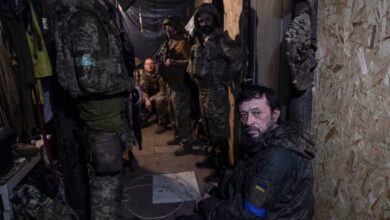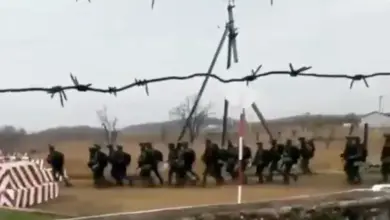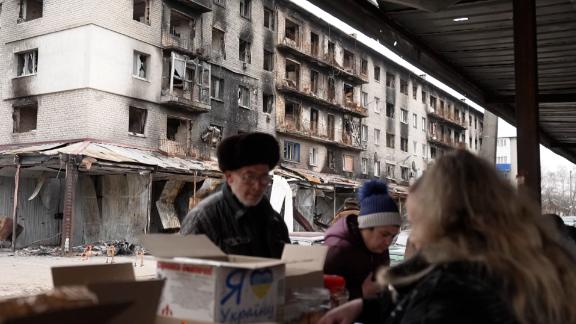
Her purple nail polish matches with the pink eyeshadow framing her green eyes. “I like to dress up,” the 78-year-old former council woman and retired teacher says. She points to the chipped color on her manicured nails, adding: “The problem is that scissors are blunted and don’t work well anymore.”
She quickly unloads the loaves of bread from the delivery sedan, before the driver, wearing a flak jacket, speeds away.
The delivery slowly draws in the elderly residents through Siversk’s largely deserted streets. They come seeking free bread, gossip and company.
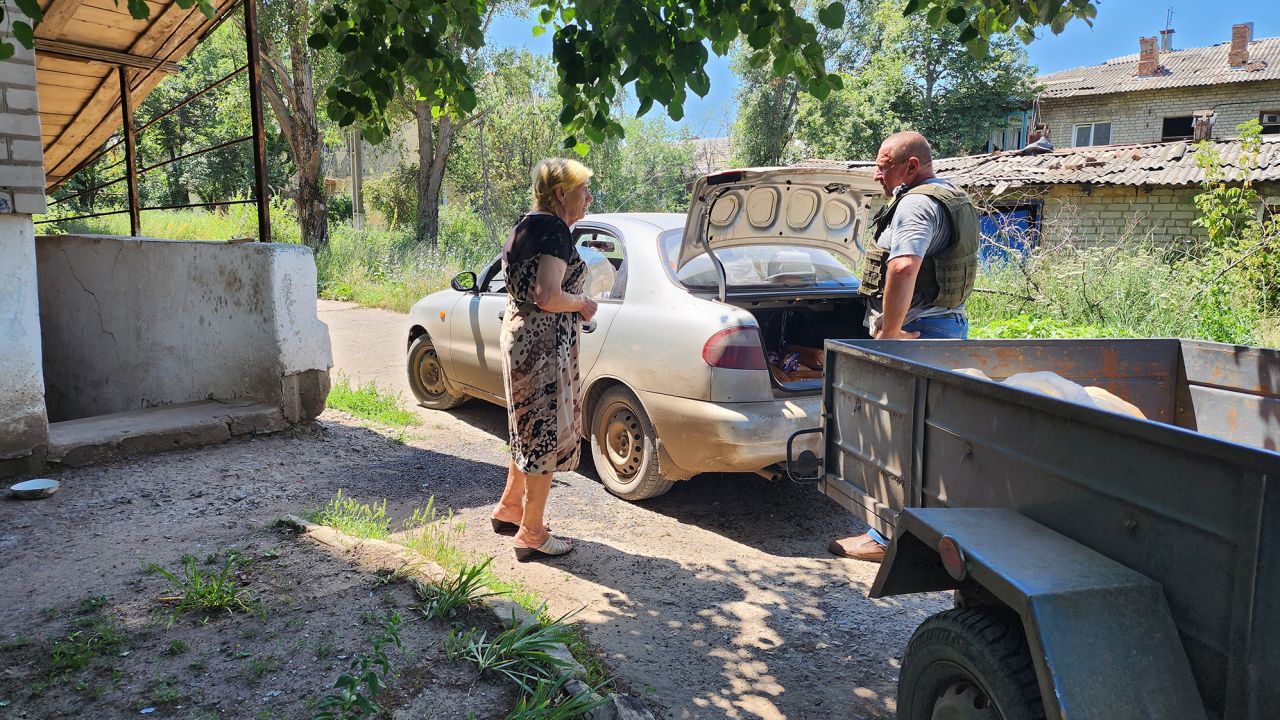
It’s over 30 degrees Celsius (86 degrees Fahrenheit). Mykola shows up shirtless carrying a tote bag emblazoned with a red heart. “My apartment luckily still stands,” he says. “The windows are shattered and the roof is damaged, but the walls still stand.” He worries his apartment would be robbed if he leaves the town.
The Siversk residents who spoke to CNN asked to be identified only by their first names.
Just 10 kilometers (six miles) away from the current front lines, this Ukrainian town has been battered by more than 500 days of fighting. Overturned vehicles sit next to craters of all sizes.
Many of the buildings are reduced to rubble and wreckage. Those left standing have had no running water or electricity, many since the war began in February 2022.
Still, roughly 1,000 people, in a town that once had a population 10 times that, hold on to their homes and a pale semblance of the lives they once had there.
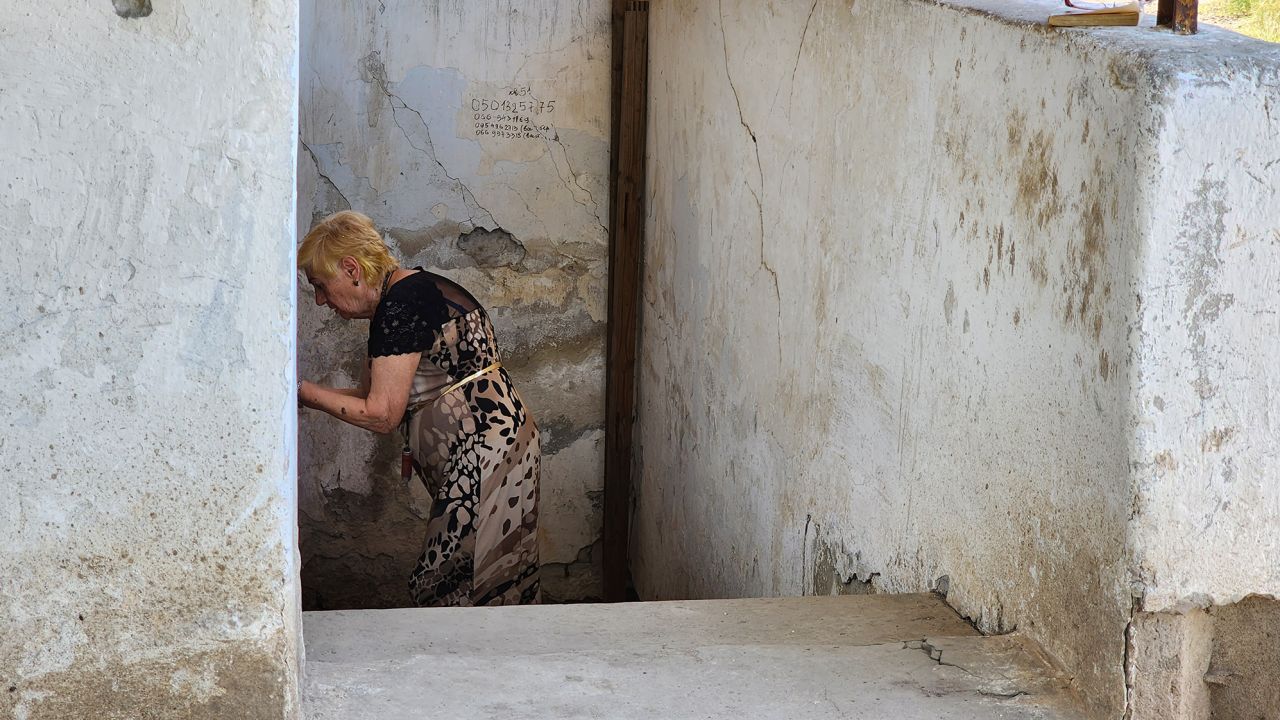
Olha spends every night in the small bed she put in her dark, damp basement. “I would like to live under normal conditions. We are tired,” she says. “Now it’s warm and they shell a bit less, so I try to stay in my apartment during the day.” Like many buildings in Siversk, the glass windows of her apartment are broken or missing, and she covers the frames with a red blanket.
The summer paints the town with a hue of normality. Purple, yellow and red waist-high flowers line the pathways between the inhabited buildings.
Makeshift stoves and laundry lines in overgrown front yards are the few indications of life inside. Palm-sized solar panels are strewn over tree branches and benches.

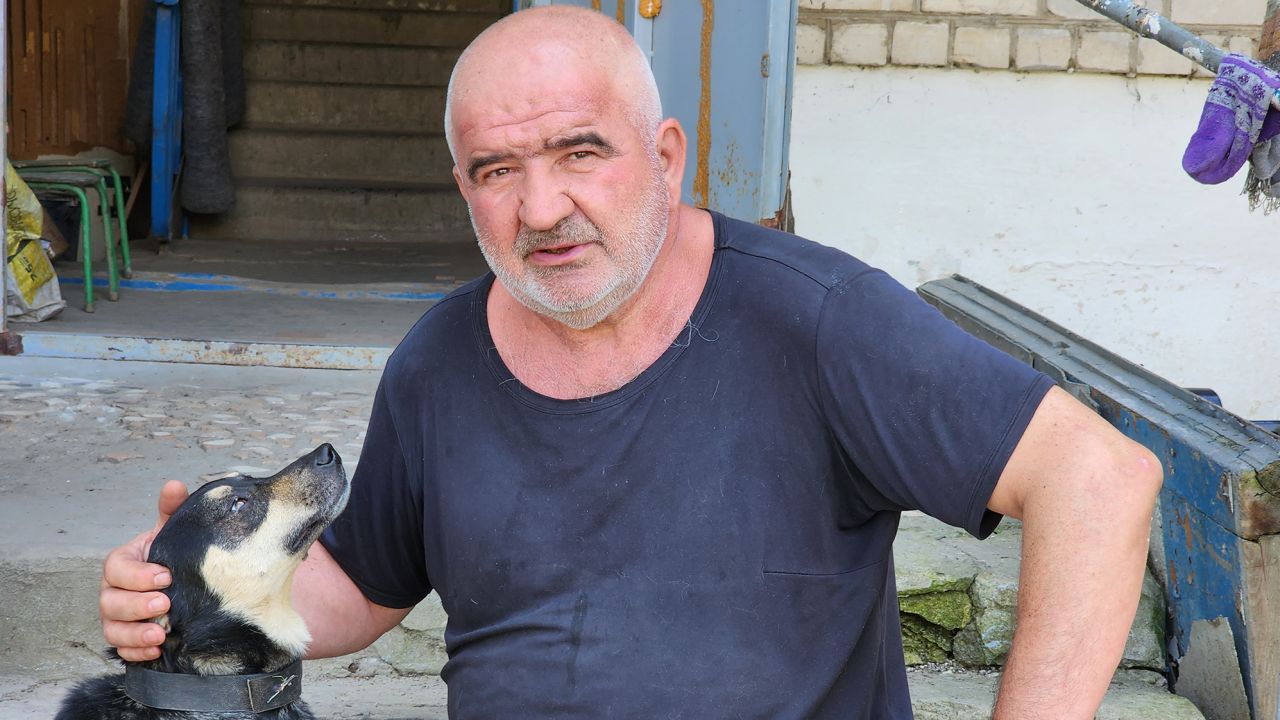
Seventy-year-old Nina now grows herbs, onions and potatoes in her front yard. “We are waiting for that day, that minute when the war ends,” she says. Life in wartime has been painful for her, she told CNN during a previous visit last winter. Now standing outside her building in a red and blue robe and scarf, she says she remains optimistic.
Others are not. “Hundred percent (Russian President Vladimir) Putin will not fall back. He will keep pushing even if he has to kill every last Ukrainian to take over the country,” says Oleksandr, a 64-year-old retired train driver. He sits on the steps next to a blue water tank, hugging his dog Malysh.
“I feel sorry for the Ukrainians and the Russians. I’m an old man and I feel sorry for all of the soldiers when they die,” he adds.
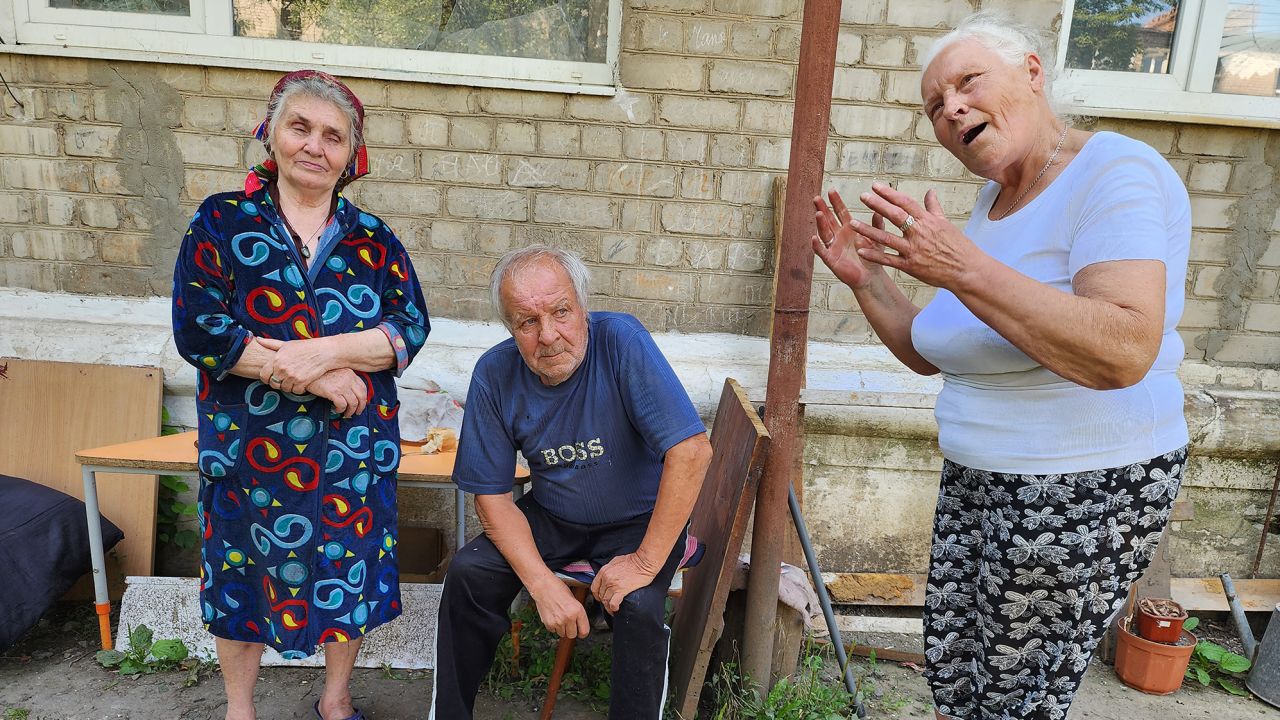
The residents are protective of what remains of their hometown and their connections to it. Olha is wary of the Ukrainian soldiers in town. “Who would like them firing nearby?” she asks. “They wanted to set up a gun right here in our courtyard. But people came together and stopped it.”
She says she won’t leave because her two sons who died before the war are buried there. Many share similar emotional ties to the town.
“I live in my parents’ house. The walls are still standing. How can I leave it behind?” says 64-year-old Sasha. His parents are also buried in the Siversk cemetery.
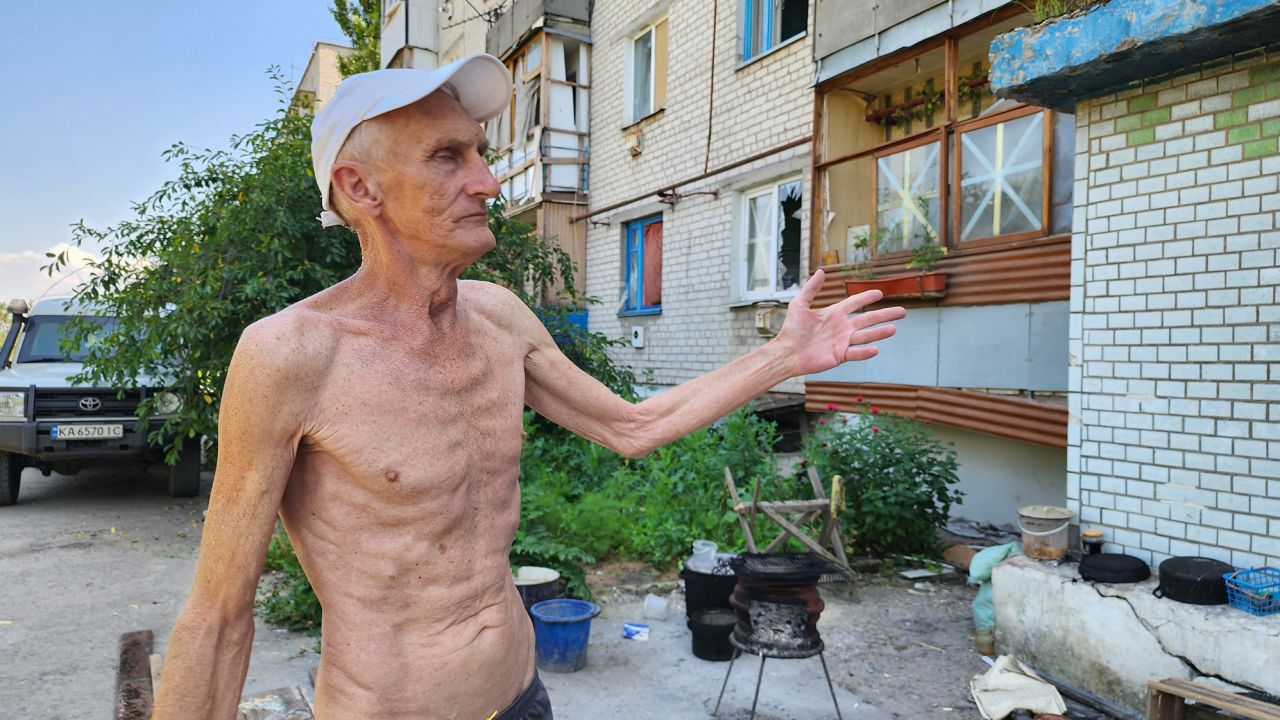
Sasha walks to Olha’s street corner in dark shorts and a white cap. His shorts barely hang on to his thinning hips. His ribcage is visible through the lightly tanned skin.
When the generators are running, he listens to 70s’ metal and rock and roll music on a small CD player. He used to be a drummer, he says.
“I’m all in the music. I don’t feel anger. I don’t feel sadness. It’s just an unpleasant situation,” he says. He is looking for an old drum to repair, so he can play again.

